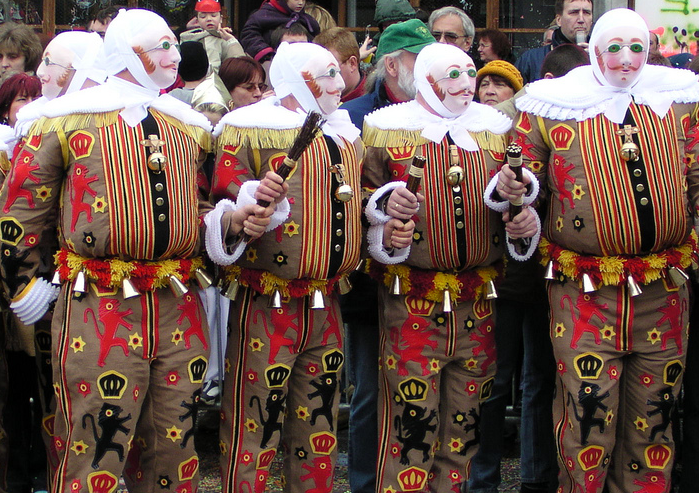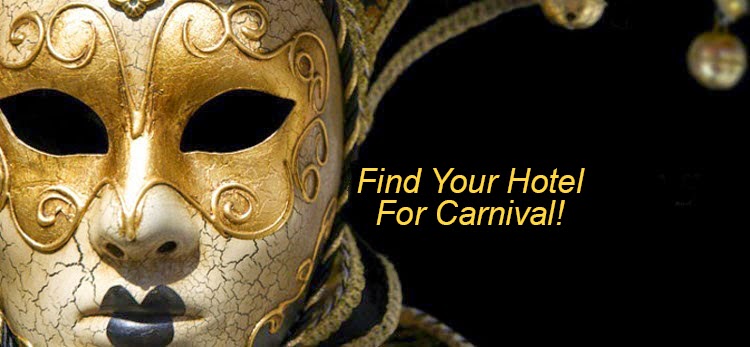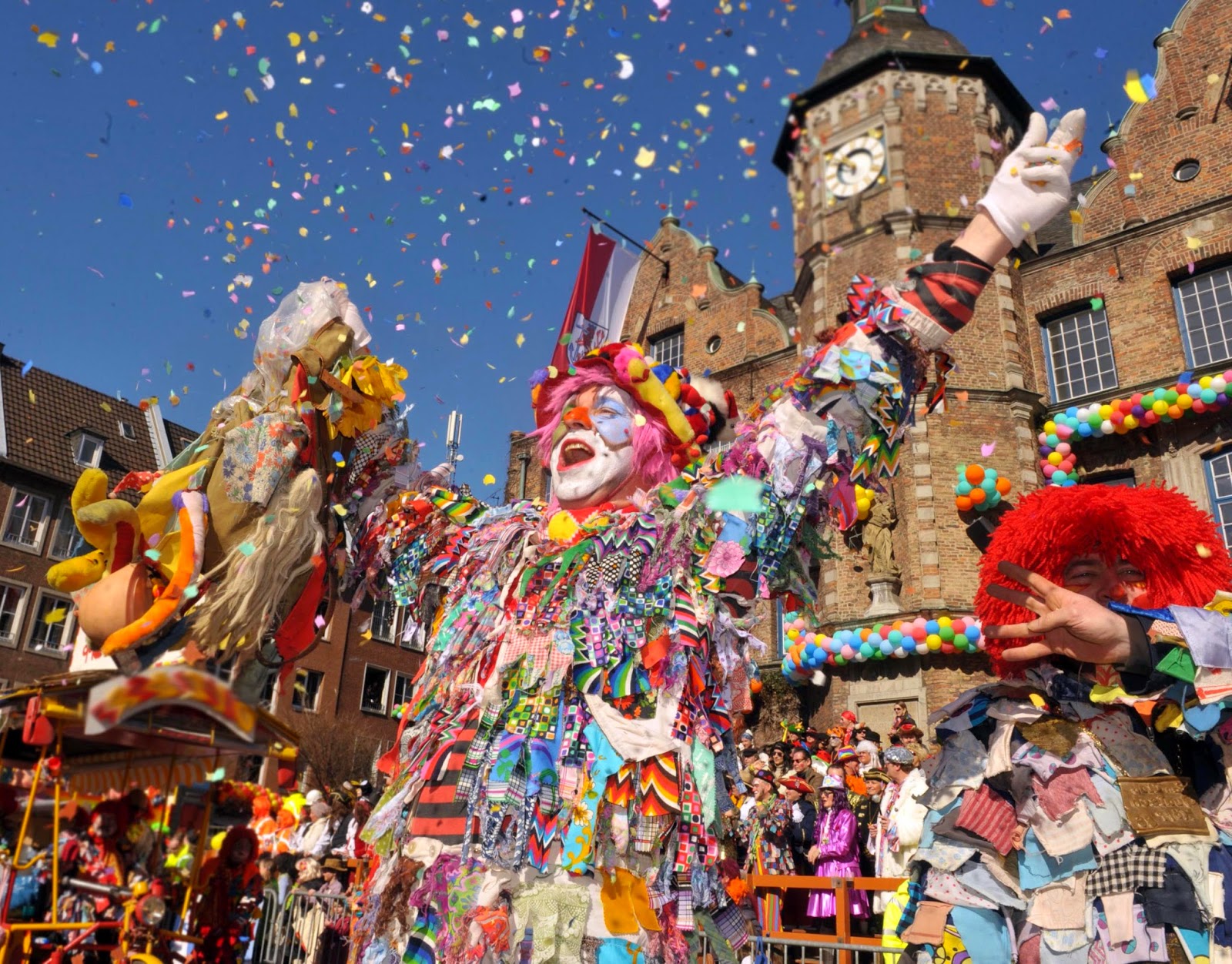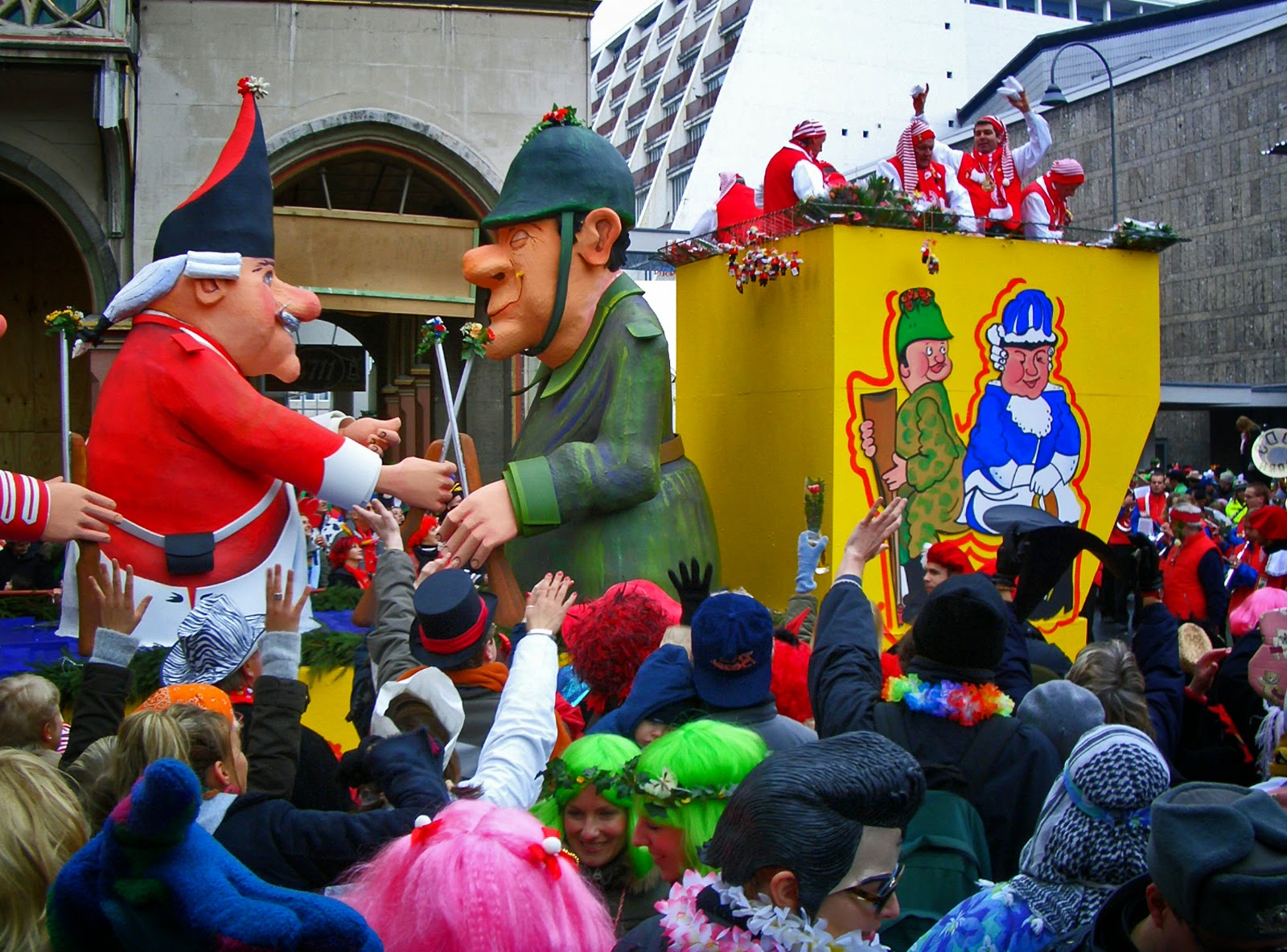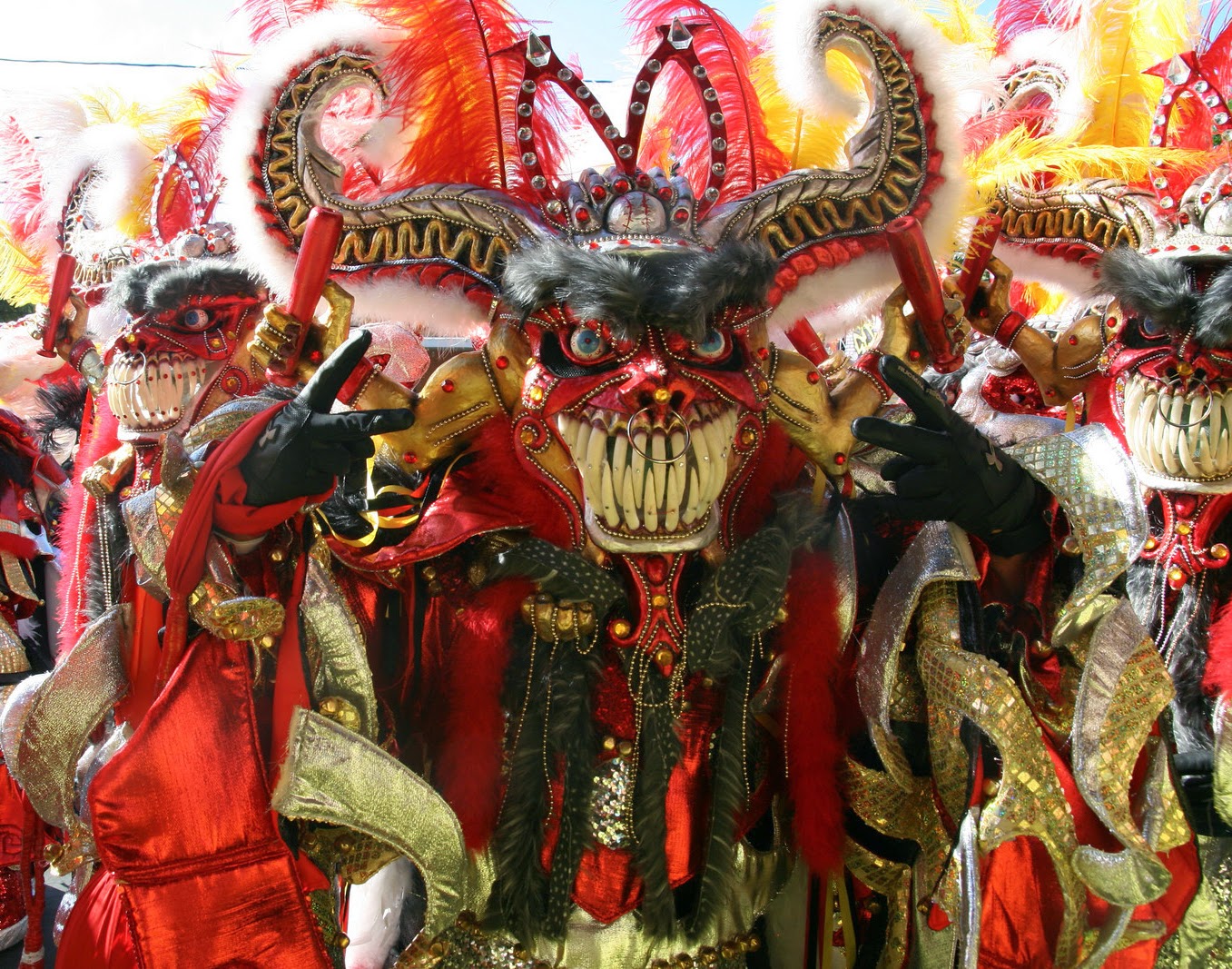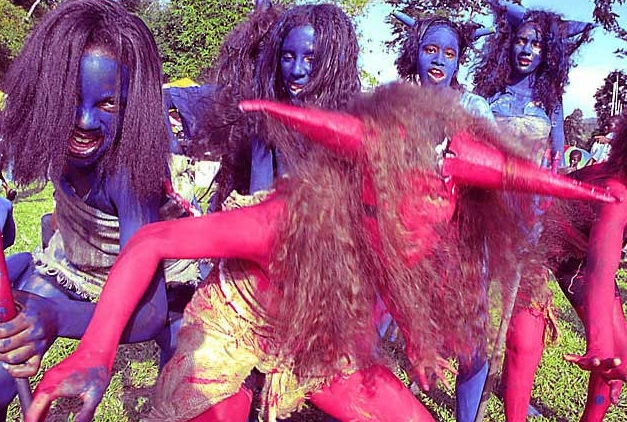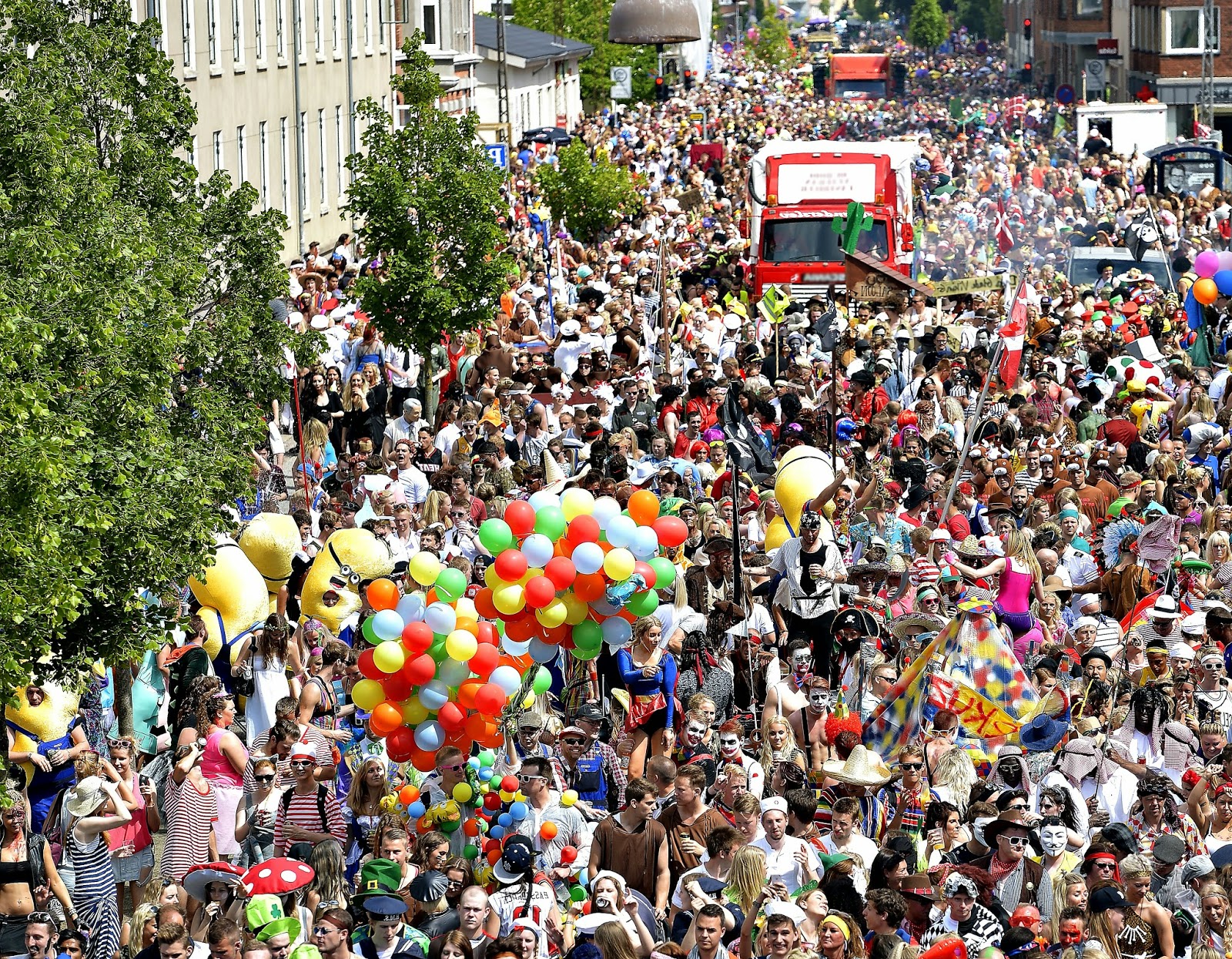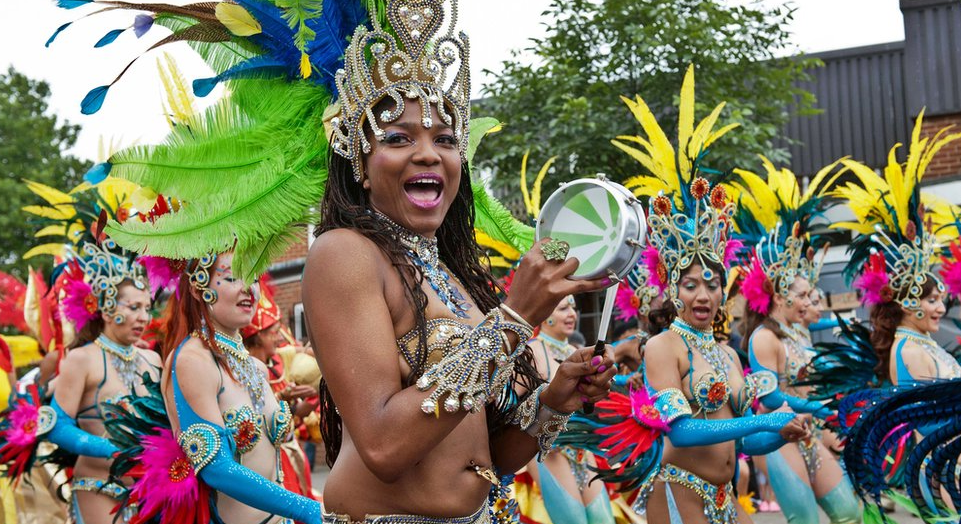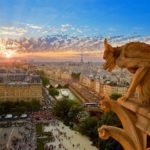Today we’re going to introduce you 4 very original Carnival parties: two of them are held in Europe, the other 2 are extra-European events for which you will need a bit more organization.
- the Carnival in Cologne, Germany
- the Carnival of La Vega, in the Dominican Republic
- the Trinidad and Tobago Carnival, in the Lesser Antilles of the Caribbean
- the Carnival of Binche, in Brussels, Belgium
To these parties we’d like to add two off-season Carnivals and then, at the bottom of the article, some general information about the origins of the Carnival.
If you fancy the idea to turn your next trip into a chance to take part in a fabulous Carnival party, we are going to present here some of the best events related to Carnival 2015 in Italy, in Europe and the rest of the world.
We have been looking for the less famous festivals, leaving out the great classics, such as the Carnival of Venice, that of Rio de Janeiro, the Mardi Gras in New Orleans (that the city wanted to maintain even after the disaster of Katrina), the Carnival of Nice in France or that of Tenerife in the Canary Islands. (We had described some of them in a previous post).
Enjoy your reading!
1. The Carnival in Cologne – Germany
Right at the beginning of the carnival season, on November 11th, the three most important characters of the Kölner Karneval are elected in the old Heumarkt square and they symbolically receive the city’s keys: they earn the titles of Jungfrau (virgin), Prinz (prince) and Bauer (peasant).
This year, the hottest events of the carnival are going to place between February 12th, the so-called Weiberfastnacht (Shrove Thursday), and February 18th (Ash Wednesday).
Weiberfastnacht is the day when women gain the right to command for an entire day, even over men: it’s the so-called Women’s Carnival Day. On February 12th, then, you will see large groups of masked women of all ages making great noise around the streets of Cologne, by cutting ties to unlucky men or ask them for a Bützen (a kiss) on their cheek… So men, watch out if you happen to be in town that day!
We recommend you to go to the old town of Cologne, where you can get lost in the masqueraded crowd and taste some good German Kölsch (beer) at any time of the day and night!
The highlight of the Cologne Carnival 2015 will be reached the Monday before Ash Wednesday, known as Rosenmontag (Rose Monday), when a great parade of floats is going to launch sweets and gifts of all kinds to the crowd.
This tradition dates back to 1823, when the first Rose Monday took place.
On Shrove Tuesday, the Carnival celebrations will end with the burning of the nubbel late in the evening: a scarecrow made of straw gets burned so to expiate all the sins committed during the Carnival days.
The Cologne Carnival ends on Ash Wednesday and, according to the traditions, folks keep on celebrating in the city’s restraurants and pubs, enjoying delicious fish meals.
The best option to experience these seven days of intense celebrations would be to spend the entire week in Cologne. You can have a look at our special offers in Cologne: perhaps you will find the right solution for you!
Keep in mind that, given the period, Cologne is going to be very busy and chaotic so you’d better move on foot or use public transport, which are very efficient.
On the official website of the Cologne Carnival, you can find the detailed program and any useful information to fully enjoy this colourful festival.
2. The Carnival in La Vega – Dominican Republic
Concepción de La Vega, also known as La Vega, is a city in the Dominican Republic, located approximately 130 kilometres from Santo Domingo, where visitors can see the ruins of La Concepción, a fortress built by Christopher Columbus back in 1494.
Today, La Vega is a modern city with elegant villas, tree-lined streets and a nice cathedral.
Colours, music and traditions are the ingredients that make the Carnival of La Vega a magical event attracting thousands of tourists from around the world.
The origins of this Carnival date back to 1520, when, for the first time, people took to the city’s streets wearing their most beautiful clothes, playing music and dancing in order to protest against the colonists’ religious pressure. In the following years, the habit of parading with masks and costumes was kept alive.
A typical costume of La Vega Carnival is the Diablo Cojuelo (the Limping Devil), who wanders the city’s streets wearing a mantle full of bells, ribbons and using a whip to hit people.
The Carnival celebration in 2015 are going to begin on the last Sunday of January and will keep on going until 27 February with lot of parades, music and fun every Sunday.
3. Trinidad and Tobago Carnival – Lesser Antilles
In Trinidad and Tobago, the Carnival was introduced by French settlers in 1783 and was the only period of the year when slaves were allowed to tease their masters and have fun without censorship.
Today the Carnival is welcomed with great entusiasm not only by the local population, but also by tourists who seize the chance to participate in the wildest parties at the rythm of calypso music and soca percussion. Unbridled dancing, musical competitions and spirited parades play a big role in the celebrations.
The highlight of the Trinidad and Tobago Carnival is undoubtedly the feast of J’Ouvert, on February 16. J’Ouvert, which is a contraction of two French words, jour=day and ouvert=open, is one of most lively street parties taking place in the Caribbean islands.
It begins at around 4 o’clock in the morning, on the last Sunday of Carnival. Participants smear themselves with chocolate, paint or oil impersonating devils and other evil creatures. In this way, they bring back to life ancient folk rituals.
The carnival ends on Shrove Tuesday (February 17th) with thousands of masqueraded people that begin to parade from 8 o’clock in the morning.
You can find all the information you need for a trip to Trinidad and Tobago following this link.
4. The Carnival of Binche – Belgium
Between February 15 and 17 you can visit the folkloristic Carnival in the Belgian town of Binche. Listed in 2003 as a Masterpiece of the Oral and Intangible Heritage of Humanity by UNESCO, the Carnival of Binche is considered one of the most bizarre festivals in the world.
Celebrations begin on Fat Sunday when hundreds of men (called Gilles) march through the city to the sound of traditional Carnival music, wearing wax masks with long moustaches, glasses and warding off evil spirits with sticks. Actually to be a Gill at the Carnival is a great honour for men.
On Monday, called “Trouilles guenouilles“, all the people of Binche stroll around the city, disguised like Gilles, challenging friends to recognize who is hiding under the mask. And if you are wrong, you have to pay for a drink!
Mardi Gras is the climax of the carnival when more than 1,000 Gilles go out along with other characters like Pierrots and Harlequins.
If you want to experience the most famous Carnival of Belgium, you can find all the necessary information on this page.
Off-season Carnivals in 2015
Now we’d like to mention two off-season Carnivals, as it were, for those who can’t take a trip next month.
They are two very original events that take place both in Europe, respectively in Denmark in May and in London in August.
Save the dates and see if you can arrange a trip with a little notice.
Carnival in Aalborg – Denmark
In Aalborg, the Carnival is celebrated in May, precisely from 15th to 23rd.
Organized for the first time about thirty years ago, the Carnival in Aalborg was proclaimed the largest Carnival in Northern Europe thanks to the huge number of participants and visitors.
It is one of the best Carnival options for families travelling with children.
Aalborg Carnival includes three distinct phases: the celebrations dedicated to children (the Children’s Carnival), a challenge between the various Carnival groups (Battle of Carnival Bands) and a proper Carnival Grand Parade throughout the streets of the city.
In addition to the beauty and originality of the masks, there is a great involvement of the children. It’s a real spectacle Watching the parade of over five thousand kids along with their parents along the city’s streets is so touching.
The Kildeparken (a large public park in the cinty’s centre) is the right place to be to fully enjoy the Carnival celebrations. Here is the official site of the Carnival in Aalborg for 2015, where you can get more detailed information on the single events.
Along with the parades on the streets, Aalborg Carnival is celebrated also on the water. Yes, you got it right!
Many decorated boats will parade along the city canals and will join the people marching on the streets right in the harbour of Aalborg.
Celebrations are going to end on Saturday with a breathtaking fireworks show.
Given the spring season, besides expericencing the most famous Carnival in Northern Europe, you could seize the chance to visit Copenhagen, reachable in approximately 45 minutes flight.
The Notting Hill Carnival – London
Every year the Notting Hill Carnival attracts thousands of visitors from all over the world that are literally conquered by its typically Caribbean flamboyant style.
Founded in the sixties by Caribbean immigrants, who wished to transform the Carnival into a festival dedicated to all the people facing prejudice and racism, over the years it became a celebration involving all the different ethnic groups that live in the multicultural district of Notting Hill.
During the Carnival period, on the streets of Notting Hill, famous artists from around the world will perform to the sound of Caribbean and reggae, samba and jazz music.
Usually the Notting Hill Carnival begins on Saturday with a steel-band competition; the Sunday is dedicated to children with lots of events for them. The most beautiful and original costumes get an award.
Here you can find the detailed program of the famous Notting Hill Carnival in London.
Taste then the delicious barbecue in the culinary stands located along the streets: you will have the chance to taste some traditional dishes of the Caribbean Island. Go easy on the hot sauce! 😉
Recently, the Carnival has attracted around one million visitors so you’d better book your hotel in advance. For getting around you can use the tube, even though in this period some stations may be temporarily closed to avoid congestion.
Here you will find all useful information on transport in London.
The Notting Hill Carnival is a lively, funny and friendly festival, but beware of pickpockets (as happens in any big event), by keeping valuables out of sight and out of their reach.
Conclusions
This is only a short list including some of the most colourful and lively parties that are celebrated around the world during the Carnival season 2015.
This year the Carnival season will officially start on Sunday, February 1st, the so-called Septuagesima Sunday, according to the liturgical calendar of the Catholic Church: this is the Sunday that falls 9 weeks before Easter, to be precise the 64th day before Easter, and marks the beginning of Carnival, a period that originally entailed a meat-free diet during weekdays.
The origins of Carnival
Actually, the true origins of Carnival must be sought in more ancient rituals, such as the feast celebrated in honour of the god Dionysos in Greece (the Anthesteria) or the Saturnalia of ancient Rome, a festival dedicated to Saturn, god of agriculture and natural cycles.
What was the goal of these festivals?
To temporarily subvert social order, differences and obligations, leaving room for fun, excesses and even debauchery, and launch a symbolic renewal process. Chaos then ceased with the end of the festival time, when customary order was restored, new and more vigorous than before.
Rituals of this type can be found in other ancient cultures with an essentially purificatory goal: to mark the end of a phase and the beginning of a new one, a transition during which people feel the need to get purified.
Once integrated into the Catholic culture, the Carnival became a time when the believer could look within himself and somehow reconcile with God.
The Carnival today
Over time, the religious and spiritual meaning of the Carnival got lost, while the festive character took decidedly over, spreading throughout the world, especially in Catholic countries, parades, festivals and processions in which the essential and distinctive element is represented by masks and costumes.
